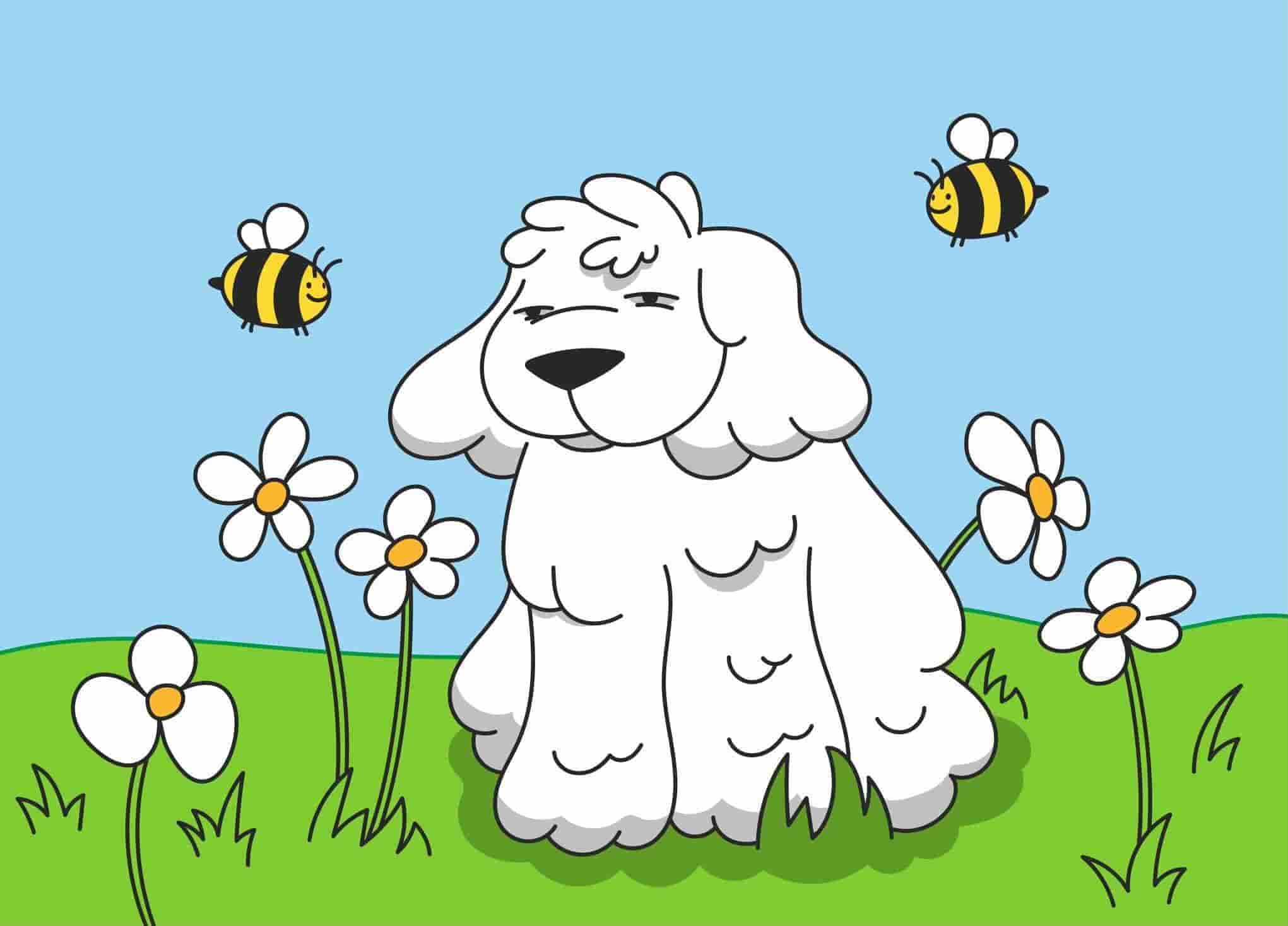It's normal for dogs to be intrigued by buzzing bees that hover around, which may cause them to try to catch or chase it. But what should you do if your dog is stung by a bee? Are dogs allergic to bees?
In most cases, a dog bee sting only causes a mild local swelling or irritation. And while dogs that got stung by bees might feel discomfort, this often goes away after a few hours. Meanwhile, it is crucial to note that there are instances when bee stings can be dangerous as well.
Some examples include: when your dog is allergic to the poison that is released from the bee's sting; when there are several stings by multiple bees; or when your dog is stung in sensitive areas such as the inside of the mouth, throat, or nose. If severe reactions are observed, it is crucial to have your dog checked by their vet as soon as possible to prevent danger.
When and where bee stings are more likely to occur
Because many dogs love chasing games (or simply chasing their tails), a bee sting on a dog may happen as a result of a dog playing with a bee out of fascination, or it may also be due to a dog's annoyance for having been stung before.
Bees are more active during the warmth of the day. And among the common places where dogs get stung by bees are on the nose or mouth when they try to chase or capture it or on their feet when they accidentally step on it. Stings on the skin's surface are generally nothing to worry about, resulting in mild swelling and irritation that goes away in a couple of hours.
If your dog inhales or swallows a bee and gets stung near the throat, it can cause their airway to be blocked due to the swelling, and therefore calls for immediate treatment. The same goes if your dog happens to be allergic to bee stings.
Signs of bee stings in dogs
If you're wondering how to tell if your dog got stung by a bee, below are the common signs to look out for:
- Whining
- Nibbling or biting on a particular area
- Excessive licking on a particular area
- Holding their paw up
- Drooling
- Pawing on areas such as their mouth, face, or nose.
- Redness and swelling on a particular area
- Hives
Can dogs be allergic to bees? Absolutely! Here are some common symptoms of an allergic reaction after being stung:
- Difficulty breathing
- Swelling on the head, mouth, neck, throat, eyes, or ears
- Drooling
- Vomiting
- Pale gums
- Weakness
- Diarrhea
- Collapsing
- Pacing
If you observe your dog displaying the aforementioned signs, contact your vet immediately. In some cases, you don't need to visit a vet clinic, but each incident of bee sting is unique and may require consulting with a licenced veterinarian. If you are hesitant whether you should take your dog to a hospital, you can always find vet help online with Online Vet by Petcube.
How to treat bee stings in dogs
An immediate reaction is absolutely necessary if you noticed a bee sting your dog. The most important part is to determine whether your dog is allergic to bees. Thus, you should take different actions during the first thirty minutes after a sting and afterward.
First 30 minutes
Closely monitoring your dog's reaction to a bee sting for the first 30 minutes is crucial to ensure that they do not exhibit allergic reactions. Dogs that have been stung before or those stung by several bees are the ones who are more prone to having a reaction. If, for example, you notice excessive swelling in areas such as their face, mouth, neck, or throat, it is essential to monitor your dog's breathing. If you notice that your dog has a hard time breathing, bring them to an emergency vet right away.
Suppose your dog happens to be allergic to bee stings. In that case, there is a possibility of anaphylactic shock, which is a severe allergic reaction that is life-threatening and should therefore be treated immediately.
Among the most common symptoms of anaphylaxis are: vomiting within just 5-10 minutes after contact and/or having pale gums. If your dog exhibits any of these symptoms, don't hesitate to bring them to an emergency vet to administer IV and medications that may save their life. Among other signs of anaphylaxis are agitation, drooling, and sudden aggression.
After 30 minutes
Usually, single stings only lead to mild irritations and swelling that are not a cause for worry. While such reactions usually don't need treatment, there are ways to help ease your dog's distress.
Below are the things that you can do if your dog is exhibiting mild symptoms after a bee sting once allergic reactions are ruled out.
- Keep calm and make your dog comfortable. Unless your dog has an allergy, they should feel better in a few hours and might be back to normal in one to two days
- If the stinger can easily be taken out, remove it immediately. Do not pinch the venom sack, as this might cause the venom to spread further. In case you know how to remove the stinger on your own, make sure to do it with special tweezers. If you are unsure how to safely remove the stinger, call your veterinarian to ask for advice.
- Apply a cold compress to the sting site to reduce swelling.
- You can also make a paste with water and baking soda and apply it to the bee sting (which is acidic).
- Try to keep your dog from licking or pawing on the sting.
- Show your dog some love to help them feel safe and secure.
If the swelling and irritation continue, it is best to call your vet. Remember that it is essential to monitor your dog during this time because allergic reactions may happen anytime after stings, even if your dog didn't experience any allergic reaction in a stinging incident before.
Common veterinary treatments
To treat bee stings on dogs, vets may administer quick-acting antihistamine injections and steroids to reduce swelling, irritation, and discomfort. This is likely the case if your dog is experiencing difficulty breathing. Meanwhile, your vet can provide your dog with oxygen and cool them if they are hot and feeling distressed. In more severe cases such as anaphylaxis, your dog may be given fluid therapy, adrenaline, and other supportive treatments if necessary.
Even if your Fido has been stung by a bee before, some dogs still find bees intriguing and may still want to chase. So when it comes to preventing your dog from getting stung by bees, what you can do is to distract them when they start chasing a bee.
Was this article helpful?
Help us make our articles even better










